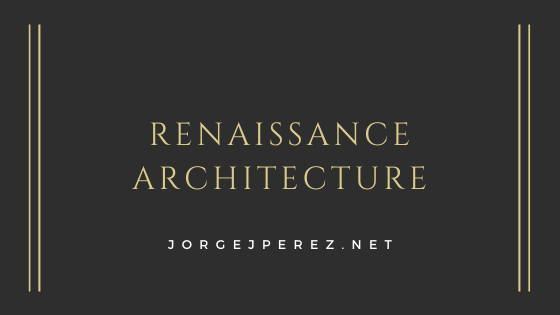The style of architecture known as the Renaissance began in Florence, Italy in the 15th century. From there it became popular throughout Europe. This architecture became preferred over the medieval Gothic style. The inspiration for it was from the Roman ruins in Italy. Books created by ancient architects were the inspiration.
Key Elements
There are certain elements a person can use to differentiate Renaissance buildings from others.
*There are three types of buildings that were built during this time. They were villas, churches, and palazzos. The palazzo was a town residence and the villa was a residence in the countryside. They are common in all of Europe.
*Renaissance buildings have flat classicism. The walls of the buildings do not have physical depths as part of their decorations. The flatness is the reason the curved lines are not part of these buildings.
*The most common decorative elements are string courses, pilasters, pediments, and arches. The various stories of the facades are identified with decorations. This makes it possible for people to look at a Renaissance building and easily tell if it is one or two stories high.
Vibrantly Painted Interiors
Most Renaissance buildings have vibrantly painted interiors. Renaissance art is often associated with frescoes. The most well-known example of architecture providing the right setting for a stunning painted interior is the Sistine Chapel. During the 15th and 16th centuries in Europe, artists grew in numbers. This is what was the motivation for the interior decoration.
Geometrical Shapes
Renaissance architecture has a mastery of geometrical shapes. They are important since this is what ensures the stability of these buildings over time. It also uses space in the best possible way and contributes to the grander and taller results. Building plans for the Renaissance incorporate squares and circles into the design. They provide a sturdy foundation and have a positive aesthetic role.
Columns
They are an important characteristic of Renaissance architecture. Columns are an easy element to build. The knowledge of the Romans was lost after the fall of the Western Roman Empire in 476. Renaissance architects taught themselves how to make them when books explaining the details of creating columns were discovered.
The Renaissance is a combination of pagan culture and architecture changed for Christian tradition. The images in a building that may have been a pagan temple are now made to honor God. This can be seen from how the interiors and exteriors have been created.
Architecture is always an interesting study, especially when you can study multiple cultures at the same time. Renaissance architects often combined elements of the ancients along with their own techniques to create a wide variety of buildings; as such buildings from the era are interesting to look at in order to determine which techniques were copied from Romans and Greeks and which were completely fresh to those of the era.
Mixing Ancient Elements
It needs to be noted that Renaissance buildings combine elements from classic architecture and Renaissance elements. This means that any Renaissance building had to be inspired by something from the classic period and then updated to follow Renaissance tastes. This meant that the building needed some sort of touchstone to the classic buildings, such as columns or materials, and then were built from there. The buildings also usually turned out to be symmetrical, making for buildings that are intrinsically pleasing to the eye.
Domes
Domes are always great to see. However, in order to build a dome so that it does not fall requires that the builder follows a precise formula when building it; not following that formula can cause the dome to fall in on itself. Interestingly, that formula had been lost for a huge amount of time but was eventually found in the writings of such authors as Vitruvius. As they add a certain splendor to buildings, they are a classic element that Renaissance architects loved adding to their buildings.
Linear Perspective
Renaissance architecture also uses linear perspective to write up the buildings. This was an outgrowth of the painting and drawing that Renaissance artists were famous for, and it allowed for some striking details. The most prominent of these is the facade, where something had a particular appearance from one angle and another appearance from a different angle. By using linear perspective, it was easy to determine what a building would look like from the beginning.
With that information, a trip to Italy becomes much more interesting. You will find yourself looking at buildings and asking yourself what the architect was thinking and what he was trying to accomplish. Given how much of the architecture remains from the era, a simple trip will allow you to explore history from a fresh perspective as you look for all of the connections.

